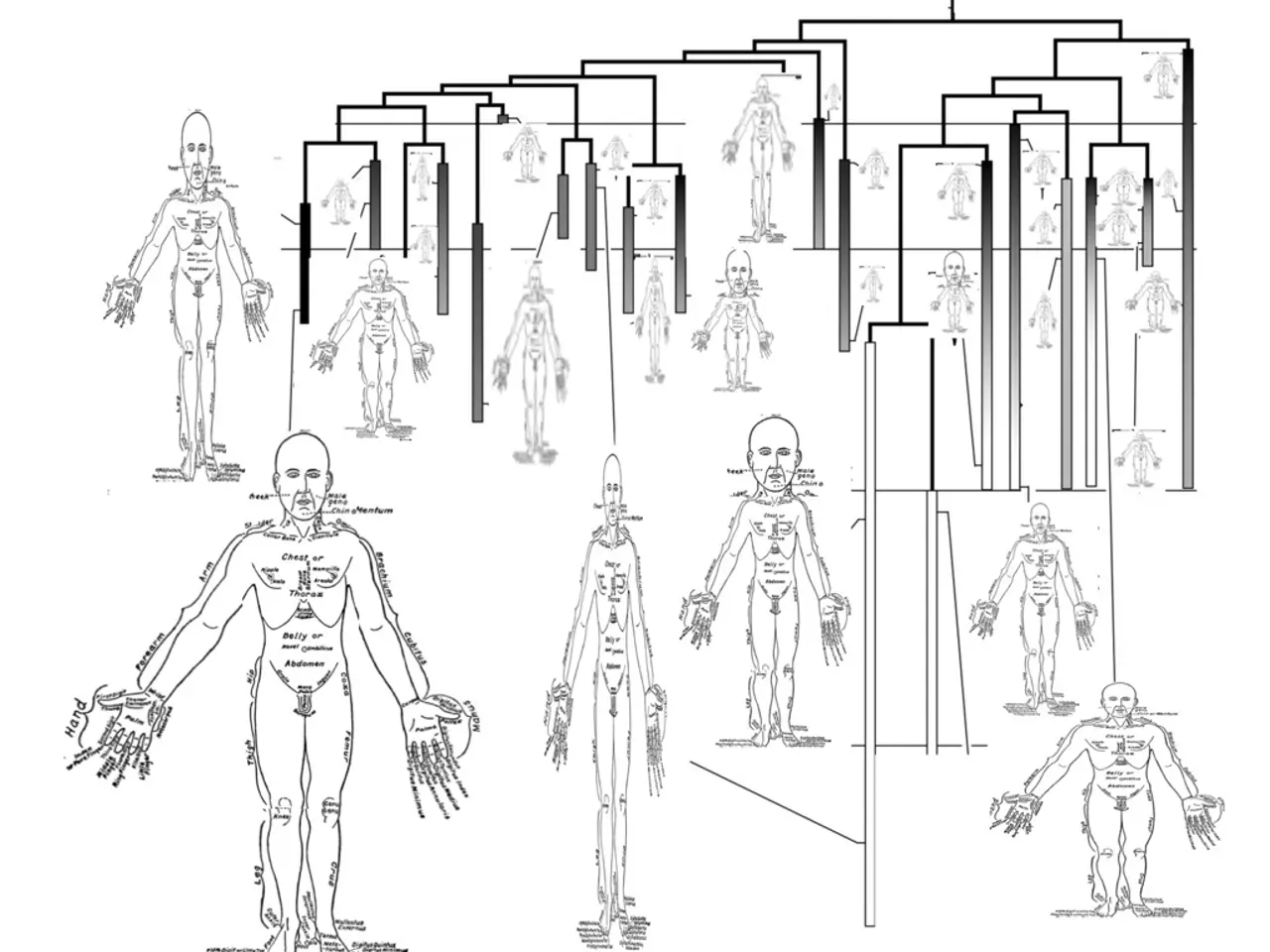Lung and Airway Layout: Role, Data, Health Concerns, and Beyond
The respiratory system is a vital system in the human body, responsible for the exchange of oxygen and carbon dioxide. This intricate system, consisting of the nose, sinuses, lungs, diaphragm, and other organs, plays a crucial role in sustaining life.
The nasal cavity serves as the entrance for air, where it is warmed, moistened, and filtered by hairs and mucus to trap dust, mold, and other contaminants before reaching the lungs. It also contains receptors for the sense of smell, adding another layer of protection against harmful substances.
A hollow tube, the pharynx, connects the nasal cavity and mouth to the larynx. It regulates the passage of air and serves as a shared passage for food and air. The larynx, often known as the voice box, contains vocal cords and facilitates sound production as air passes through it. It also helps protect the trachea during swallowing.
The trachea, or windpipe, is a tube that conducts air from the larynx down into the lungs. Its cartilage rings keep it open, ensuring unobstructed airflow. The trachea branches into two bronchi, which lead air into each lung.
The lungs are the main organs of respiration, containing millions of tiny air sacs called alveoli. It is within these alveoli that the crucial gas exchange occurs. Oxygen from inhaled air diffuses through alveolar walls into blood capillaries, while carbon dioxide diffuses from blood into alveoli to be exhaled.
The diaphragm, a dome-shaped, muscular, and membranous structure, is the principal muscle involved in respiration. During inhalation, the diaphragm contracts and flattens, moving downward. This action increases the volume of the thoracic cavity, reduces internal pressure, and allows air to flow into the lungs. Conversely, during exhalation, the diaphragm relaxes and returns to its dome shape, causing the thoracic cavity volume to decrease and internal pressure to increase, thereby pushing air out of the lungs.
In addition to its role in breathing, the diaphragm also aids in expulsive actions such as coughing, sneezing, vomiting, and even during childbirth by increasing intra-abdominal pressure.
This coordinated structure allows efficient breathing and gas exchange, sustaining life by providing oxygen and removing carbon dioxide from the body. Conditions such as bronchitis, asthma, COPD, pneumonia, and sinusitis can affect the respiratory system, highlighting the importance of maintaining a healthy lifestyle, including avoiding smoking, eating a healthful diet, and exercising regularly.
[1] Medical News Today. (2021). How does the respiratory system work? [online] Available at: https://www.medicalnewstoday.com/articles/324558
[2] Healthline. (2021). Diaphragm. [online] Available at: https://www.healthline.com/human-body-maps/diaphragm
[3] NHS. (2021). Respiratory system. [online] Available at: https://www.nhs.uk/live-well/healthy-body/respiratory-system/
[4] Mayo Clinic. (2021). How does breathing work? [online] Available at: https://www.mayoclinic.org/tests-procedures/pulmonary-function-test/about/pac-20395079
[5] American Lung Association. (2021). How the Lungs Work. [online] Available at: https://www.lung.org/lung-health-and-diseases/lung-disease-lookup/how-the-lungs-work/default.html
Primary functions of the diaphragm extend beyond respiration, including roles in expulsive actions like coughing, sneezing, and even childbirth. In the realm of health and wellness, maintaining a primary focus on medical conditions like asthma, bronchitis, COPD, pneumonia, and sinusitis, as well as adopting healthy lifestyle habits, such as eating a healthful diet, regular exercise, and avoiding smoking, can significantly improve one's respiratory health. AQ science, in particular, may provide insights into further enhancing our understanding of various medical conditions and finding innovative approaches to prevent and treat them.




